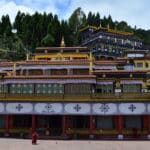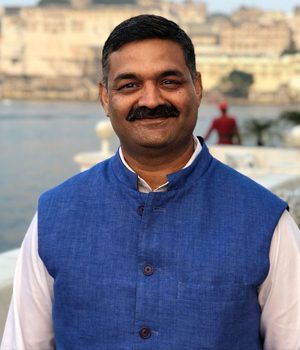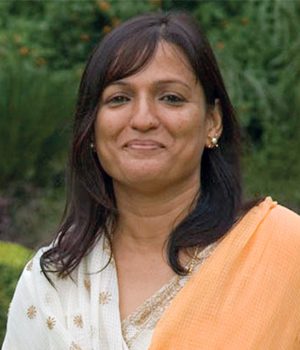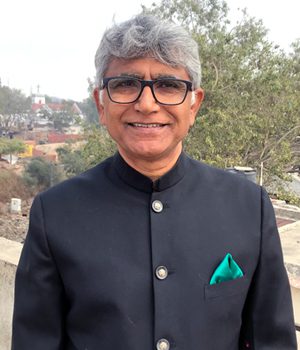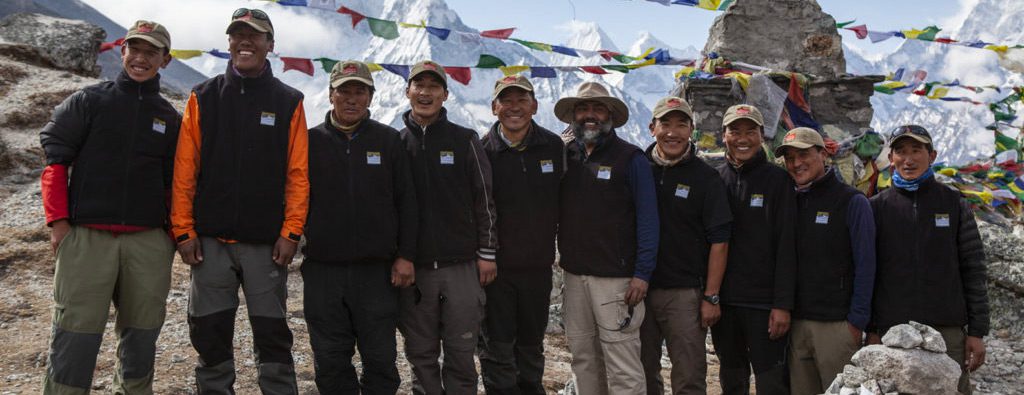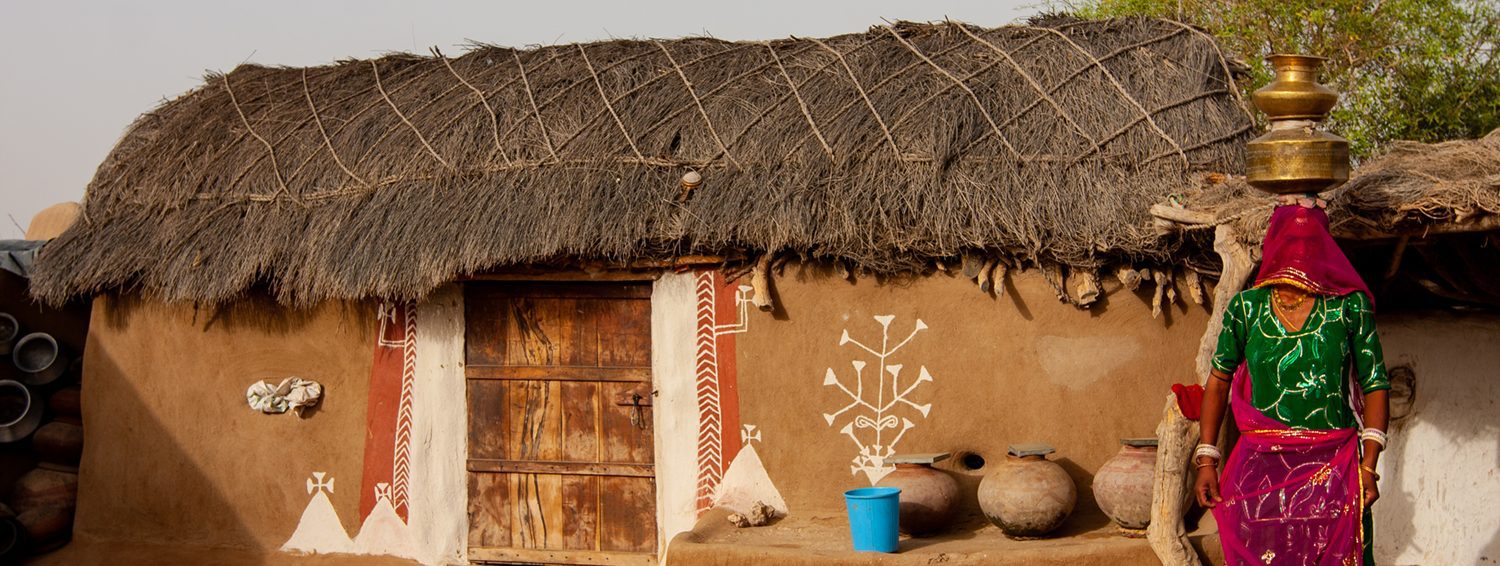INDIA
Sikkim Cultural Safari: A Journey into Himalayan Culture
Touring the Himalayan foothills of Sikkim, this private journey knits together an exquisite combination of cultural rarities and breathtaking scenery. Passing through verdant valleys in a land steeped in Tibetan Buddhist culture, you come upon enchanting villages, ancient monasteries, and vantages offering panoramic views of soaring mountains, such as the Kanchenjunga massif, a complex of five peaks known as the “Five Treasures of the Great Snow.” At the handsome tea plantations of Darjeeling, you may sip a variety of fresh family-grown teas overlooking magnificent vistas. And at the hill station of Kalimpong—a timeless crossroads between Sikkim, Bhutan, Tibet and the Bengali plains—you will find a truly unique blend of cultures, diverse architectures, and impeccable shopping for religious scroll paintings, woolen garments, and wooden crafts.
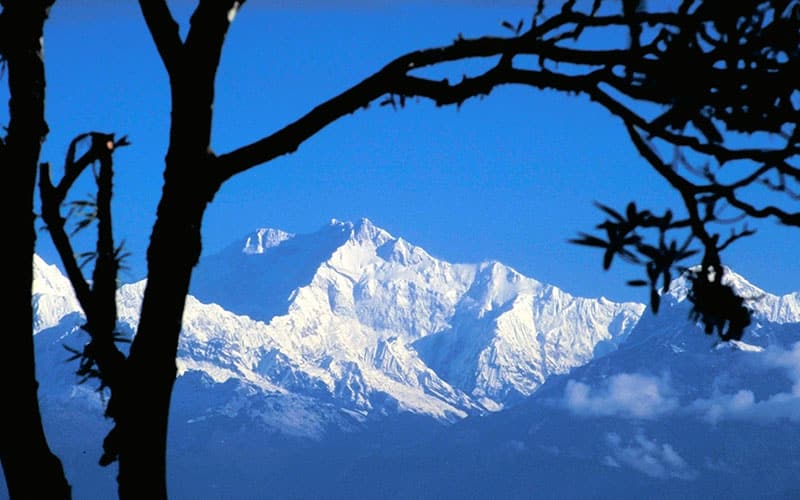
DATES: | January to May & Sept to Dec |
2 TRAVELERS: | From $6,995 per person |
INTERNAL AIRFARE: (Delhi – Bagdogra – Delhi) | From $210 per person |
Inclusions & Exclusions
LAND PRICE INCLUDES:
• Accommodations as listed in the above itinerary, based on double
occupancy and inclusive of all taxes and service charges;
• Meals as listed in the itinerary;
• All ground transportation in India using private air-conditioned
vehicles;
• All entry fees at all temples, museums and monuments on
sightseeing excursions;
• All arrival/departure airport/hotel transfers;
• All sight seeing with professional English speaking local guides;
• Bottled drinking water during meals and also during the day as
needed by clients;
• Govt. Service Taxes as applicable.
LAND PRICE DOES NOT INCLUDE:
• International airfare, departure taxes and en route stopovers to
and from India;
• Internal India airfare (cost listed separately);
• Tips/gratuity to local guides, drivers, bell boys, etc.;
• Items of a personal nature, such as alcoholic beverages, laundry,
phone calls, etc.;
• Movie, video and still camera fees;
• Trip cancellation, travel delay or baggage insurance. (Note: This
optional coverage is highly recommended and can be purchased
through Nomadic Expeditions);
• Charges incurred as a result of delays beyond Nomadic
Expeditions’ control.
DATES: | Year Round |
2 TRAVELERS: | Please call for pricing. |
INTERNAL AIRFARE: | Please call for pricing. |
SINGLE SUPPLEMENT: | Please call for pricing. |
NOMADIC EXPEDITIONS
Tour Leaders
ICONIC INDIA
Photo Gallery
INDIA
MAP
Reviews
Our Blog
Sanjay Saxena Q&A: The Foremost India Expert Discusses Travel & Our ‘Festival of Rajasthan’ Journey
Sanjay Saxena, Director of Operations at Nomadic Expeditions, was born in New Delhi, India. A professional guide since 1979, Sanjay has led groups on touring, trekking, climbing, and on safaris...
READ MOREThe Norms of India: How to Travel Confidently Among Different Cultural Norms
The Norms of India: How to Travel Confidently Among Different Cultural Norms First-time travelers to India may feel intimidated by the cultural differences and various norms of this subcontinent of...
READ MOREItinerary
Download ItineraryAfter clearing immigration and customs, our representative will meet you at the receiving area and escort you to your hotel.
(The Imperial – Heritage Rooms)

After Breakfast, on the tour of “Old Delhi,” you will head out to explore this exotic locale with its narrow dirt roads, myriads of people and inexpensive and colorful bazaars that keep alive the traditional workmanship for which Delhi has always been famous. A bicycle rickshaw will take you into the heart of Chandni Chowk (the silver square - so named because of the silver merchants), ending at Jama Masjid.
Heading back to “New” Delhi, drive by India Gate, a 42-metre archway built in memory of Indian soldiers killed during the First World War, continueing the the Rashtrapati Bhawan. Built in the early 20th century as the Imperial residence of the Viceroy, today, it is the official residence of the President of India.
In the afternoon visit the very active Laxminarayan Mandir, a Hindu temple. The temple is spread over 3 hectares (7.5 acres), adorned with many shrines, fountains, and a large garden with sculptures.
Conclude the day by visiting the UNESCO World Heritage site of Qutub Minar, one of Delhi’s most striking monument. It was constructed in 1192 by Qutub-Ud-Din Aibak. Built in red sandstone and marble, it has a height of 72.5 meters (237.8 ft) and contains 379 stairs. This soaring conical tower, it is an exquisite example of Indo-Islamic Afghan architecture and is the tallest minaret in India.
(The Imperial – Heritage Rooms; B, WD)

Early this morning fly to Bagdogra Airport, servicing Darjeeling and Sikkim. After arriving and clearing security, you will begin a spectacular three-hour drive to Kalimpong. Kalimpong, formerly a terminus point for the mule trains from Tibet, is now a relaxed and quiet “hill station.” Standing at an altitude of 4,500 ft., Kalimpong is a stunning sight, where flowers scent the air, the Relli river meanders down the valley of lush green hills and glimpses of the snow-capped Himalayas enchant. Life here is varied and colorful thanks to a variety of ethnic groups who make their home here while living in peace and harmony. The monastery on top of the hill offers panoramic views of the surrounding valleys.
After spend the afternooon exploring this quaint mountain town, before enjoying a traditional Sikkimese dinner.
(The Mayfair - Deluxe Room; B, L, D)

After breakfast, drive three hours to Gangtok. At an altitude of 5,700 ft., surrounded by monasteries and orchids, Gangtok is truly a traveler’s delight.
After breakfast, drive three hours to Gangtok. At an altitude of 5,700 ft., surrounded by monasteries and orchids, Gangtok is truly a traveler’s delight.
This evening you will be treated to a traditional Sikkimese dinner.
(The Mayfair - Deluxe Room; B, L, D)

You will have a full day to explore this mountain town. Begin with an early morning stroll through the spice and vegetable bazaar—a great opportunity for portrait photography. Return to the hotel for breakfast and then visit the Namgyal Institute of Tibetology. Set amidst a serene surrounding of oak, birch and ash trees, this unique organization was established in 1958. Built in traditional style, the Namgyal Institute of Tibetology promotes research in Mahayana Buddhism and the language and traditions of Tibet. It has one of the world’s largest collections of rare books and manuscripts on Mahayana Buddhism. Adjacent to the Institute are two exquisite stupas, built to commemorate the victory of good over evil. Near the Chorten are two giant statues of Lord Buddha and Guru Padmasambhava, also known as Guru Rimpoche, the patron saint of Sikkim.
Afterwards, you will be driven to the outskirts of Gangtok to visit the awe-inspiring Rumtek Monastery, the seat of His Holiness, the Gyalwa Karmapa, who is the head of the Kagyupa order of Tibetan Buddhism. Behind the main monastery is the lavishly decorated Karma Nalanda Institute of Buddhist Studies, which attracts students from the world over.
(The Mayfair - Deluxe Room; B, L, D)

This morning we drive west on a serpentine mountain road, taking about 4 hours to reach the town of Pelling. Built on a ridge line, Pelling offers unobstructed views of the Kanchenjunga massif; sunrise and sunset are especially spectacular.
In the afternoon visit Pemayangtse (sublime lotus) Monastery, one of the oldest in the State of Sikkim. Built on a hilltop, the monastery overlooks the historical Rabdentse ruins, the former capital of the Kingdom of Sikkim. The monastery is edicated to Padmasambhava (Guru Rinpoche who revived Buddhism in Tibet).
(The Elgin – Deluxe Rooms; B, L, D)

Begin your day with a visit to the historic Rabdentse ruins. This historic site once served as the second capital of the Kingdom of Sikkim, and was the seat of power until 1814 A.D. Explore the remnants of the ancient capital. The stone foundations, walls, and pillars offer a glimpse into the architectural style of the past.
Proceed to visit Rimbi Waterfalls, Rimbi Rock Garden and Kechopalri Lake after having a drive through the rich vegetation of Pelling. Kechopalri Lake is considered one of the holiest lakes in Sikkim. According to ancient traditions, this lake is believed to fulfill wishes.
(The Elgin – Deluxe Rooms; B, L, D)

After breakfast, drive to Darjeeling. Standing high in the Himalayas at an altitude of 7,000 ft. “Dorje Ling,” or place of the Thunderbolt, offers breathtaking views of snow-capped mountain peaks, with the Kanchenjunga rising higher than all the others. Darjeeling is perhaps the most fabled of the hill stations of the British Raj, as it was here that the British rulers escaped the summer heat of the plains. Its streets zigzag, with no two houses built on the same level, and is a beautiful and intriguing place, still steeped in British Indian influence.
(Glenburn Tea Estate; B, L, D)

In the early morning, visit Tiger Hill, located just eight miles from Darjeeling. Here, you will take in a stunning sunrise and watch as the entire Himalayan range, including Kanchenjunga (the third highest mountain in the world) turns golden. It is truly a majestic sight (subject to weather conditions). On the way back from Tiger Hill, stop at Ghoom Monastery, the oldest monastery in the area. Built in 1875, you can see the image of the 15-foot-high Mythey Buddha.
Also visit the Himalayan Mountaineering Institute that was started in Darjeeling soon after Tenzing Norgay climbed Mt. Everest. Mountaineering and the Institute houses a museum featuring equipment used by Mr. Norgay to climb Everest.
(Glenburn Tea Estate; B, L, D)

After breakfast, drive to Bagdogra airport for your flight to Delhi, where you will rest for a few hours before your connecting flight home.







